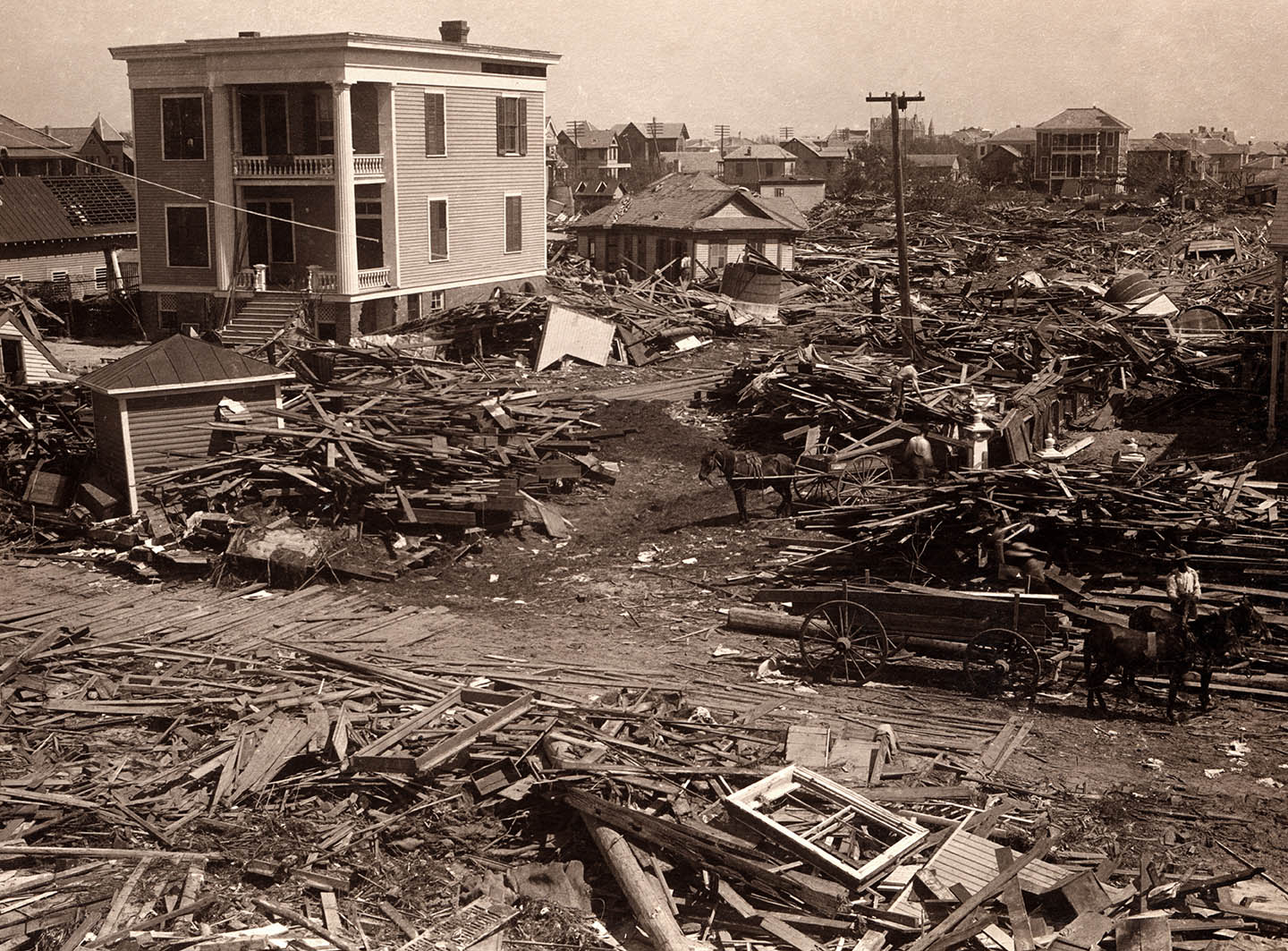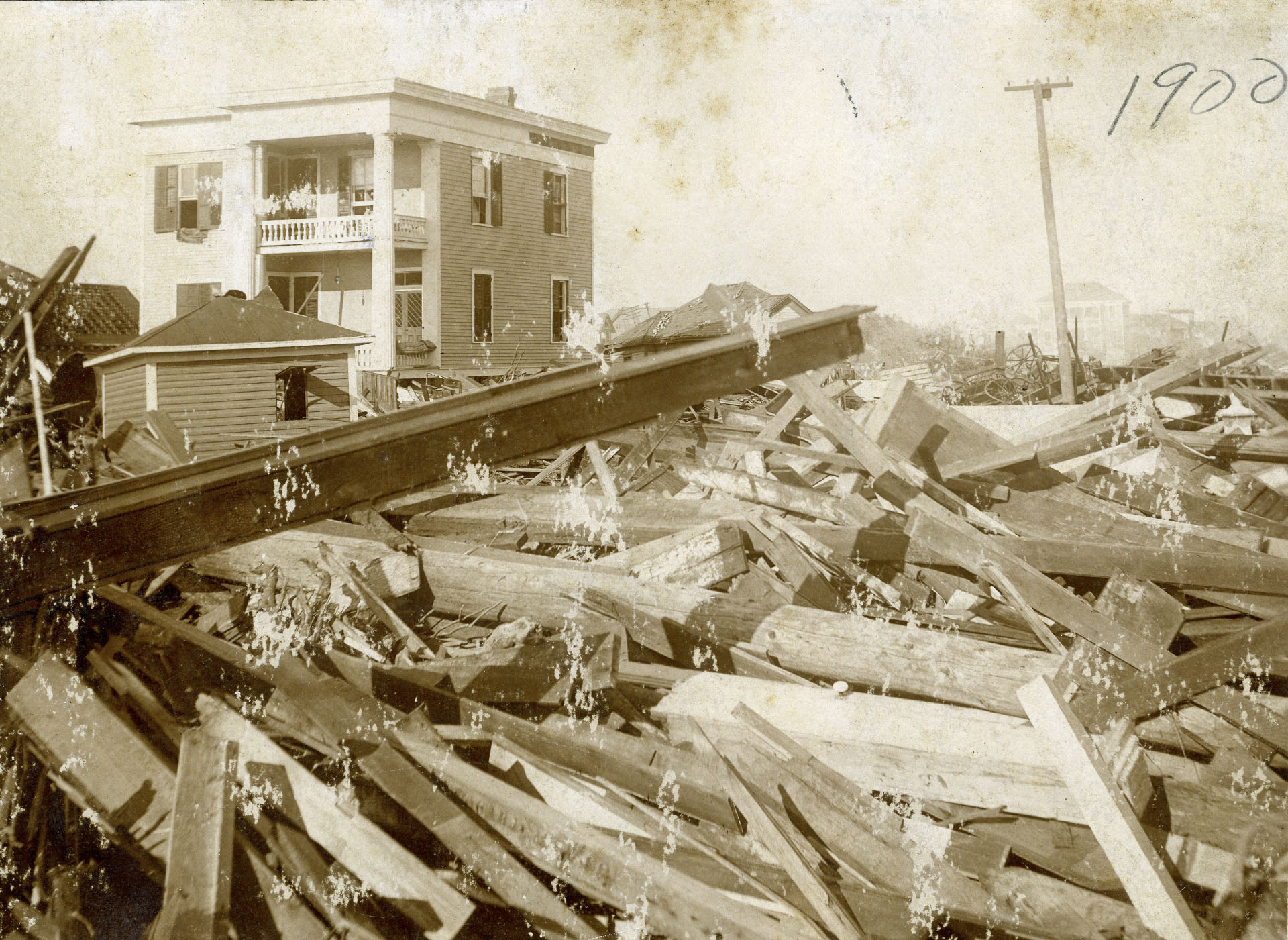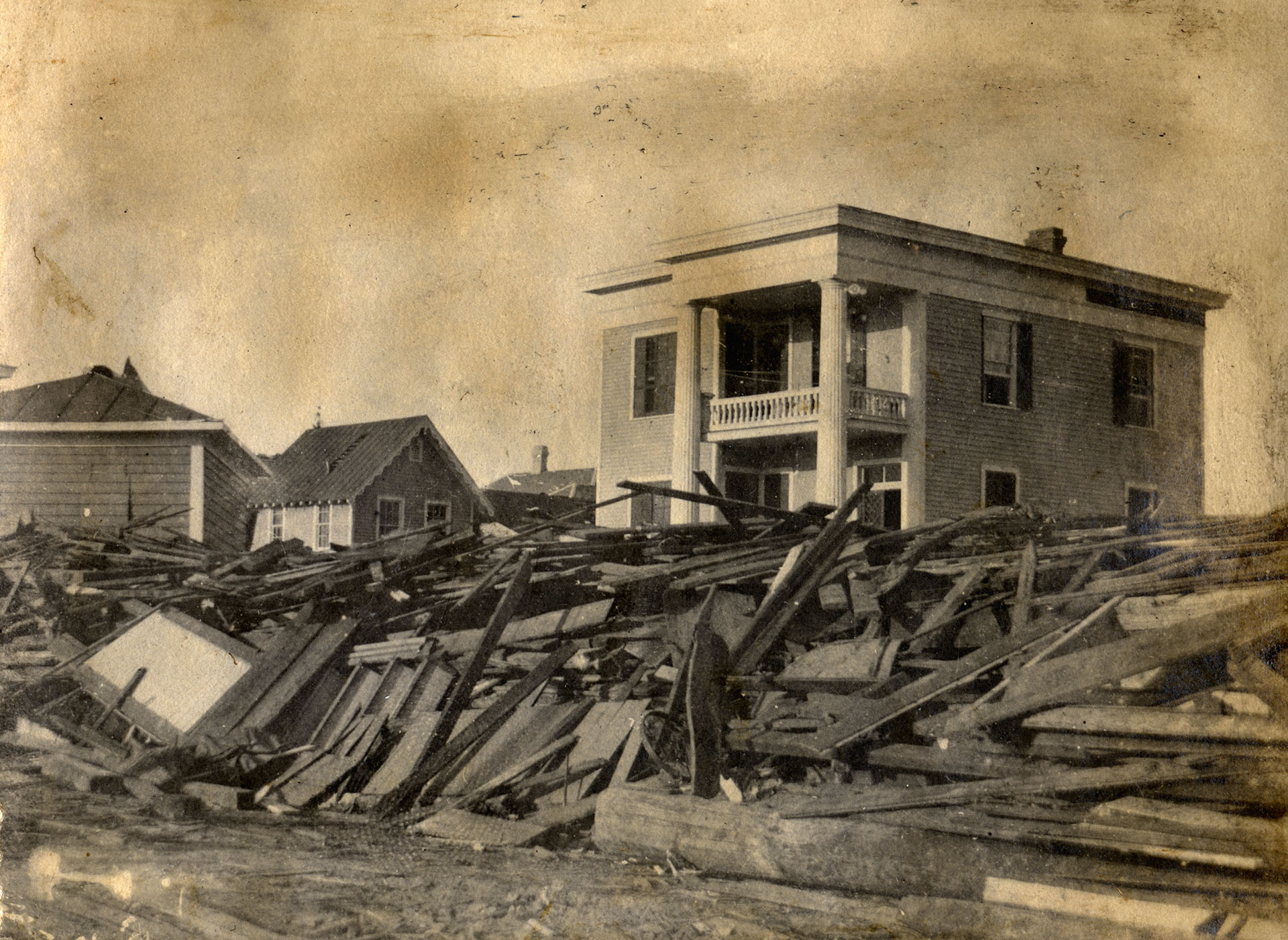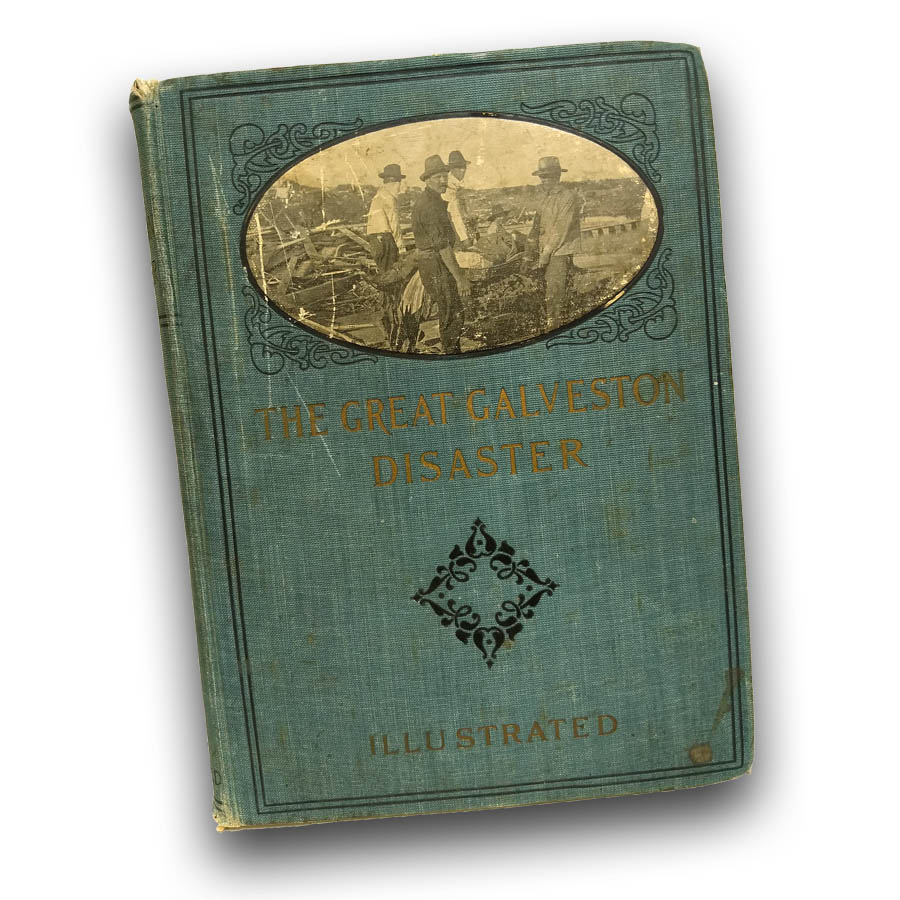
Above: This view of the house from the southwest side illustrates why the house survived when many other didn't. Notice it sits on a brick foundation that kept the wooden portion of the house above the storm surge. Also notice Ursuline Convent in the distant background, behind the telephone pole.
Survivor of the 1900 Storm
The Powhatan House in 1900
It was common at the time for a house to be named after the current owner. Thus, in 1900, this house was known as the Staley G. Spencer House. Well built and resting a on an 8' brick perimeter, the wooden portion of the house was elevated above the storm surge. At the time, most houses were not built on a concrete foundation. Rather, they utilized a construction method known as "pier and beam." Houses were built on large wooden beams as a foundation and the beams rested on top of piers, usually constructed of brick. In a violent storm surge, the rising waters often ripped houses from its piers, causing then to float away like a boat. Once floating in the storm surge, houses wwould then be crushed when the crashed into another structure or landed awkwardly on the ground.
"A house was washed against ours. In it the wreckers found eight bodies, three of these and a night sergeant of police were buried in one yard. Our house rocked dreadfully.
Alexander Spencer

Above: Close up of the brick eminence or perimeter foundation.
Because of the elevation of the house, it became a refuge for those desperate need of shelter. "All night long we could hear cries for help. To everyone who came we gave shelter, ' said Alexander Spencer, eldest son of Stanley Spencer. "Once someone knocked at the door; when we opened it a woman fell headlong across the doorstep. She had fainted from exhaustion. We found a little girl in the basement, who had been tied to a skiff," he continued.



